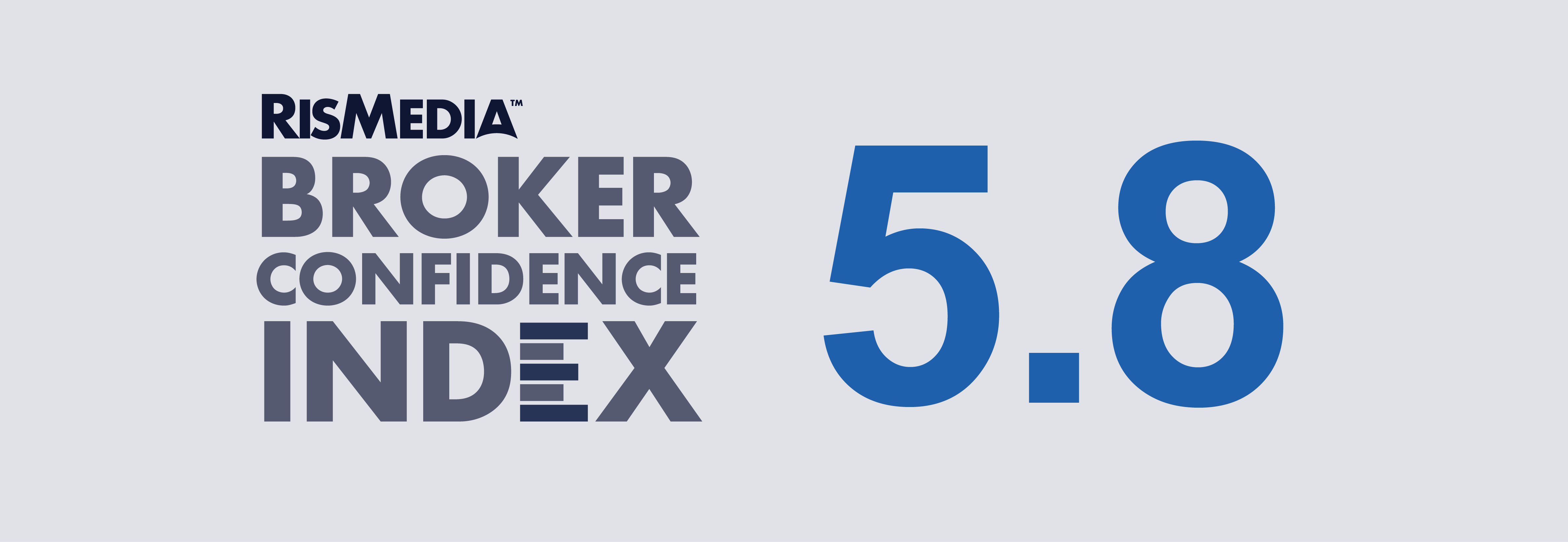Despite broker sentiment hitting a yearly low in November—at exactly the same time as it did last year—there are larger signs of positive changes in the housing market, according to RISMedia’s latest Broker Confidence Index (BCI) survey of real estate business leaders.

While the overall BCI reading fell from 6.1 to 5.8, a not-insignificant number of brokers also said they expect their regions to transition from seller’s markets to buyer’s markets. That would mark a monumental shift in the balance of housing, as sellers have remained largely in the driver’s seat since well before the pandemic.
A full 29% of brokers surveyed said they thought a market flip was likely in the next six months.
“Rates dropping is a big plus,” said one broker, who asked to remain anonymous. “End-of-year tax issues (are) moving consumers, too.”
It remains unclear whether these short-term changes in rates or seasonality will actually have long-term effects that could really change market dynamics. Much will depend on the Federal Reserve, which may or may not choose to cut rates early in 2024—or at all.
Many economists and real estate leaders anticipated a strong spring and summer at roughly this point last year, but that rally fizzled under the weight of higher-than-anticipated rates.
But experts and analysts have also pointed out that eventually, sellers will be forced to list their homes—and it might take only a relatively small shift in rates or macroeconomic conditions to open the floodgates. And the fact that brokers on the ground are starting to see the signs provides further evidence that conditions are ripe for change.
“Many people are tired of sitting on the fence, thus the pent-up demand is increasing,” said Scott Myers, broker/owner of CENTURY 21 Scott Myers REALTORS® in Texas.
The specific definition of “buyer’s market” or “seller’s market” is likely not that important to real estate practitioners, and by the strictest definitions, the country has not seen a true “buyer’s market” in around a decade.
But a flood of new inventory, combined with a demand boost from falling rates and seasonality in the spring could create a significant, tangible shift toward balance.
In this month’s BCI survey, more than two-thirds (67%) of brokers mentioned rates, inventory or both as a primary factor affecting their confidence in the market.
Notably, the Federal Reserve just indicated that it would likely not raise rates any further, and is actually planning for around three rate cuts in 2024. This is likely to have a significant, immediate effect on mortgage rates.
There are other short-term signs of relief, including a significant uptick in new listings last month, according to research by Redfin, and other leading indicators showing new constructions could play a role on the supply front.
This year
With 2023 just about to wrap up, it is important to look back as well as forward to understand how real estate is moving, and how brokers have adapted.
Normal seasonality appears to have at least partially returned in 2023, as the BCI peaked in April, at the height of the spring selling season, before tapering off into the fall. That is in sharp contrast to 2022, when the BCI hit its highest point in January, falling sharply through the spring before actually starting to rebound in the winter.
Economists previously pointed out that rates and other post-pandemic factors had essentially superseded regular seasonality for much of the last couple years. If the Fed begins cutting rates early in 2024, it’s possible that markets could continue to defy seasonal trends and kick off a selling frenzy early.
But since 2023 seemed to follow more predictable trends, the status quo would likely lend itself to a more steady uptick in sales starting in March or April.




